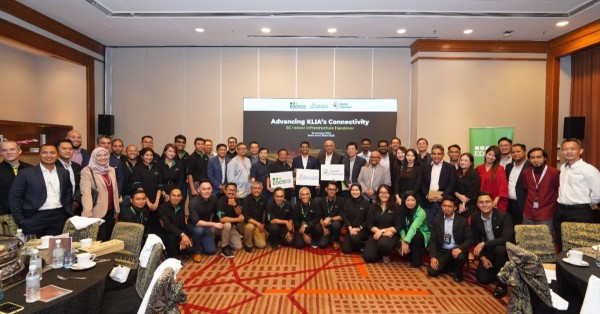Ceragon $8M Utility Private Network Modernization in EMEA
A leading power utility in EMEA has tapped Ceragon to refresh its nationwide mission-critical communications backbone with high-power microwave, signaling a broader acceleration in utility OT network upgrades.
Scope, Value, and Network Upgrade Plan
The multiphase program, initiated earlier in 2025, is expected to deliver approximately $8 million in revenue for Ceragon and centers on replacing end-of-life systems and scaling capacity across a countrywide private network. The solution deploys a mix of high-power full-indoor and split-mount radios to address diverse terrain, substation environments, and long-haul routes typical of utility footprints.
Why Ceragon Won: RF Performance and Reliability
Following a detailed technical assessment led by a regional solutions provider, the utility selected Ceragon’s radios over competing global vendors. The evaluation emphasized RF performance, transparency on roadmaps, and proven reliability criteria for operators running safety-critical SCADA, voice, and protection traffic.
Delivery Timeline and 2025 Revenue Cadence
Phase one is already in delivery, with additional upgrades slated through year-end 2025. Ceragon reports orders covering roughly three-quarters of the project value and recognition of about half the revenues in the first half of 2025, with the balance expected by year-end. Success in this tranche positions the vendor for follow-on phases.
Why Utility Private Networks Must Modernize Now
The deal reflects urgent utility needs to modernize OT connectivity as grids digitize and regulatory expectations rise.
Grid Digitalization: Bandwidth and Deterministic Performance
Distributed energy resources, EV load growth, and advanced metering increase traffic and control-plane complexity at the edge. Backbone links must scale capacity while maintaining predictable performance for time-sensitive operational applications.
Reliability and Low Latency for SCADA and Protection
Protection signaling and SCADA demand high availability and low latency. Modern microwave, when engineered with space/frequency diversity, XPIC, and adaptive modulation, can deliver fiber-like resiliency across challenging right-of-way. Full-indoor radios suit high EMI substation halls and extreme climates; split mounts lower tower loads and simplify site work where shelters are constrained.
Migrating from SDH/TDM to Packet Microwave
Many utilities are migrating from aging SDH/TDM to packet microwave with IP/MPLS or MPLSTP features, Layer2/Layer3 QoS, and carrier-grade OAM. Accurate timing (IEEE 1588v2 and SyncE) supports time-critical applications alongside conventional SCADA and voice, aligning with IEC 61850-based protection strategies.
Technology Design Considerations for Utility Private Networks
Engineering choices around architecture, spectrum, timing, and security will determine outcomes on performance and total cost of ownership.
Architecture and Spectrum Strategy (6-42 GHz, E-band)
High-power radios in licensed bands (typically 642 GHz) extend rural spans and reduce the need for costly repeaters, while Eband (70/80 GHz) can be used for urban rings and substation aggregation where short, multigigabit hops are practical. Selecting between full-indoor and split-mount form factors balances RF performance, environmental hardening, tower loading, and capex.
Timing (IEEE 1588v2, SyncE) and QoS
Designs should incorporate boundary/transparent clocks for IEEE 1588v2, SyncE distribution, and strict QoS with traffic separation for SCADA, teleprotection, and operational voice. Hitless adaptive modulation and path diversity strategies help preserve SLAs during fading events without service interruption.
Cybersecurity and Compliance (IEC 62443, NIS2)
Utilities face tightening obligations under NIS2 and industry norms such as IEC 62443. Role-based access, secure element-based credentials, encrypted management, and audited change control should be standard. Segmentation between IT and OT domains and secure FCAPS/SDN controllers reduces blast radius and simplifies compliance reporting.
Procurement Priorities and Competitive Landscape
The selection underscores how utilities are weighing vendor roadmaps, RF performance, and lifecycle economics as priorities.
Buyer Priorities: Link Budget, Sync, Energy, Automation
Key differentiators include link budget and system gain, multiband flexibility, integrated synchronization, energy footprint, indoor rack density, and mature tooling for zero-touch provisioning and telemetry. Spares commonality and services capability for brownfield migration also matter.
Competitive Field and Clear Requirements
Utilities typically evaluate offers from microwave specialists and diversified OEMs alike, including players such as Aviat, NEC, Nokia, and SIAE Microelettronica. Ceragons’ win highlights the value of high-power radio options and a portfolio tuned for utility environments, paired with a record of deployments across private networks globally.
Risks, Constraints, and Mitigation Strategies
Program success depends on early risk identification across the spectrum, supply, and migration planning.
Spectrum Coordination and Path Engineering
Licensed coordination lead times and path surveys can bottleneck schedules. Build in margins for rain fade and ducting, use ATPC and XPIC, and validate path profiles with updated clutter and climate data. Consider 1+1 hotstandby and SDFD/space diversity on critical spans.
Supply Chain and Civil Work Dependencies
Tower reinforcement, power upgrades, and permitting often pace deployments more than radio availability. Lock BOMs early, stage critical spares, and preintegrate indoors to compress onsite work. Align outage windows with grid operations calendars.
Brownfield Migration and Cutover Complexity
Maintain dual-stack capabilities for TDM/packet interworking where needed, enforce method-of-procedure discipline, and instrument turnups with real-time KPIs (availability, latency, 1588 time error) to enable rapid rollback if required.
Action Plan for Utilities and Partners
Organizations planning similar upgrades can use this program as a checklist for execution and governance.
Actions for Utilities and Grid Operators
Baseline OT traffic and timing needs; complete a spectrum audit and path study; define an availability model (e.g., 1+1, ring plus node protection); standardize on 1588/SyncE distribution; mandate IEC 62443 controls; and set acceptance KPIs for latency, jitter, and service availability. Build a multiyear migration plan that sequences the most failure-prone legacy sites first.
Actions for Integrators and OEM Partners
Create pre-approved designs by site archetype, stand up a lab for SCADA/protection emulation, automate provisioning, and package managed services for SLA assurance with predictive maintenance analytics. Document spares and RMA SLAs commensurate with mission-critical requirements.
What to Watch Next in Utility Private Networks
The initiative could catalyze adjacent investments and signal broader utility spending patterns in EMEA.
Follow-on Phases and Edge Expansion
Monitor potential extensions into regional rings, rural spans, and substation densification. Expect tighter integration with field area networks and private LTE/5G domains that rely on the microwave backbone for backhaul.
Standards and Regulatory Timelines
NIS2 enforcement and evolving ENTSOE guidance will drive security and observability requirements, while ongoing refinements to IEEE 1588 profiles for power utilities shape timing design baselines.
Financial Signals and Market Indicators
Track order intake versus revenue recognition through 2025, as execution pace and additional phases will indicate budget health across the utility sector and the competitiveness of high-power microwave in critical infrastructure upgrades.




























